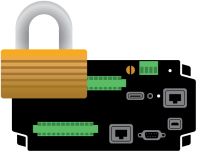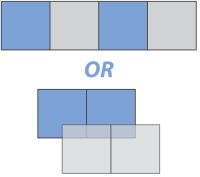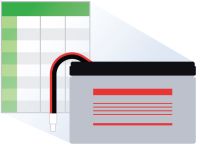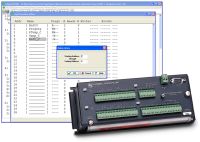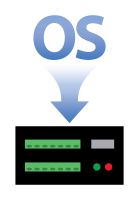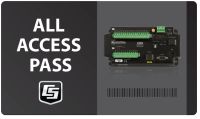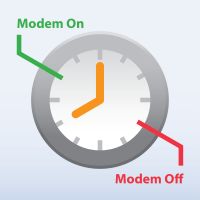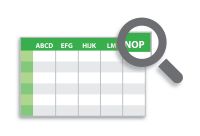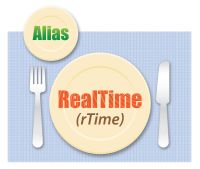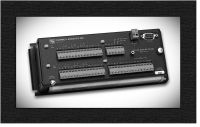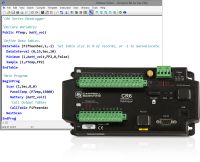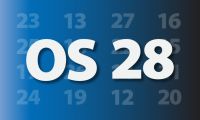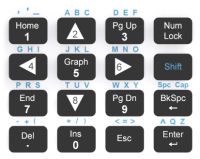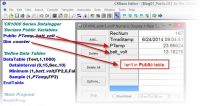El Blog de Campbell Scientific Sugerencias técnicas y recomendaciones de expertos
Displaying 1 - 20 of 20 articles authored by: Janet Albers
Uso de códigos de seguridad en el datalogger
Autor: Janet Albers | Última actualización: 03/04/2025 | Comentarios: 4
Security codes are the oldest method of securing a data logger. They can effectively prevent innocent tinkering and discourage wannabe hackers—actions that could potentially wreak havoc on the integrity of your data. In this article, I’ll discuss the different security codes and how to use... leer másDaylight Saving Time and Your Datalogger
Autor: Janet Albers | Última actualización: 02/27/2019 | Comentarios: 10
Do you need to do anything to your data logger or software to compensate for the beginning of daylight saving time? Read this short article to find out! Residents of many parts of North America, and various areas around the world, continue to observe the practice... leer másUnderstanding CRBasic Program Compile Modes: Sequential and Pipeline
Autor: Janet Albers | Última actualización: 10/25/2017 | Comentarios: 6
Have you ever noticed a message saying that your CRBasic program compiled in PipelineMode or SequentialMode? What does it mean? And, when does it matter? In this article, we’ll look at these two modes. Sequential Mode Let’s start with the more straightforward mode: SequentialMode. The CRBasic Editor... leer másDimensionar la batería y placa solar de la estación de medida
Autor: Janet Albers | Última actualización: 05/04/2017 | Comentarios: 0
Are you wondering what size battery and solar panel you need to run all of the devices in your data acquisition system? How will you know if your power supply can keep pace with your needs? To get these answers, you will need to estimate the... leer másCómo saber cuando se llena la memoria de su datalogger
Autor: Janet Albers | Última actualización: 09/15/2016 | Comentarios: 2
It’s common for our customers to wonder when their data logger memory is going to be full, what will happen to their data when the memory is full, and what they should do about it. After all, your data is specific to your application and... leer másThe Best Way to Edit Input Locations in Edlog Programs
Autor: Janet Albers | Última actualización: 06/08/2016 | Comentarios: 0
If you have one of our retired dataloggers that uses the Edlog programming language, do you know the best way to change an Input Location name? It’s possible that you may want to use a different name or insert a name where one is missing... leer másConsejos para actualizar el sistema operativo del datalogger
Autor: Janet Albers | Última actualización: 02/10/2016 | Comentarios: 0
Periódicamente sacamos nuevos sistemas operativos (OS) que incluyen nuevas funciones e instrucciones, así como mejoras o resolución de fallos. Si necesita actualizar el sistema operativo, este artículo le facilitará una serie de consejos y ayudas para llevarlo a término. Cuando descarga un OS de nuestra web,... leer másAcceder por programa a datos de las tablas
Autor: Janet Albers | Última actualización: 01/13/2016 | Comentarios: 16
After you store measurements and other data in your datalogger’s tables, how do you access that data to perform operations in your CRBasic program? Where can you get an all-access pass to your data? This article will explain how you can use a special CRBasic... leer másUse Time Intervals for More than Storing Data: Decisions and Control
Autor: Janet Albers | Última actualización: 12/30/2015 | Comentarios: 2
We all know that Campbell Scientific dataloggers are really good at taking measurements and storing data. But did you know that they can also make decisions and control other devices? Often, device control is done based on a time interval. This article briefly illustrates how... leer másHow to Rename Field Names for Easier Data Identification
Autor: Janet Albers | Última actualización: 11/11/2015 | Comentarios: 0
When you view your measurement data in tabular format, such as in View Pro or similar software, are your column headings, or field names, helpful to you? At a glance, do your field names quickly identify the data in the columns? If not, you may... leer másServing up the RealTime() Instruction with a Side of Alias Declarations
Autor: Janet Albers | Última actualización: 10/07/2015 | Comentarios: 2
CRBasic has a full menu of instructions to help you write or edit your data logger program. This article offers a main course of scheduling your data logger actions using the RealTime() instruction with a side dish of making your program easier to read with... leer másMaking Sense of an Edlog Program File for Your Retired Data Logger
Autor: Janet Albers | Última actualización: 09/09/2015 | Comentarios: 0
Our retired data loggers are still in use, and some of them use the Edlog programming language. Do you have an Edlog data logger with a .dld compiled program file that you don’t know how to read? Does your .dld file have codes that you... leer más5 Things to Know before Discussing Your Datalogger Programming Issue
Autor: Janet Albers | Última actualización: 08/26/2015 | Comentarios: 0
If you need help programming a Campbell Scientific datalogger, here are some things you can do to have a more productive conversation with a Customer Support and Implementation Engineer. At a minimum you’ll want to know: What datalogger you’re working with—such as a CR6, CR1000, CR200, CR5000,... leer másThe Benefits of Using Constants in CRBasic
Autor: Janet Albers | Última actualización: 08/05/2015 | Comentarios: 0
Why should you use a Constant declaration in your CRBasic program? What is a Constant anyway? In a previous article ("Going Public with Your Variables in CRBasic"), we talked about the Public and Dim variable declarations. Variables are just that—variable; they change. Constants, on the other hand, don’t change;... leer más4 New Ways to Use Array Notation: Copying or Transposing
Autor: Janet Albers | Última actualización: 07/21/2015 | Comentarios: 0
Copying or transposing has become easier with OS 28 (CR6 OS 1). This new operating system enables you to copy portions of an array to a new location, such as when transposing rows and columns. In this example we start with A(3,2) (3 rows, 2 columns) initialized as... leer más4 New Ways to Use Array Notation: Complex Scaling
Autor: Janet Albers | Última actualización: 07/01/2015 | Comentarios: 0
You can perform more complex scaling in an array without needing a For/Next loop. To take advantage of this feature, use OS 28 (CR6 OS 01) or later. In this example program, a unique set of multipliers and offsets is applied to the column of an... leer más4 New Ways to Use Array Notation: Initializing Multi-Dimensional Arrays
Autor: Janet Albers | Última actualización: 06/10/2015 | Comentarios: 0
Initializing variables within an array is more flexible than ever with OS 28 (CR6 OS 1). You can think of a single dimensioned array as numbers in a column. Two dimensions, in comparison, puts numbers in rows and columns. The third dimension is a page. For example:... leer másHow to Find and Insert Characters Using a Keyboard Display
Autor: Janet Albers | Última actualización: 05/29/2015 | Comentarios: 0
A keyboard display, such as the external CR1000KD or on-board display of the CR850 and CR3000, is a powerful tool you can use in the field. A keyboard display enables you to interrogate and program a datalogger independent of other telecommunication links. Most keys on a... leer másGoing Public with Your Variables in CRBasic
Autor: Janet Albers | Última actualización: 05/29/2015 | Comentarios: 0
When programming your Campbell Scientific datalogger, have you ever wondered whether you should be using a Dim variable declaration or a Public one? What is the difference between them, and when is it best to use each one? Dim and Public variables are temporary holding locations... leer más4 New Ways to Use Array Notation: Simple Scaling
Autor: Janet Albers | Última actualización: 05/29/2015 | Comentarios: 0
The newest operating system released by Campbell Scientific for its data loggers is OS 28 for the CR800, CR1000, and CR3000. (The comparable operating system version for the CR6 datalogger is OS 01.) This powerful data logger OS has been enhanced so that you can... leer más